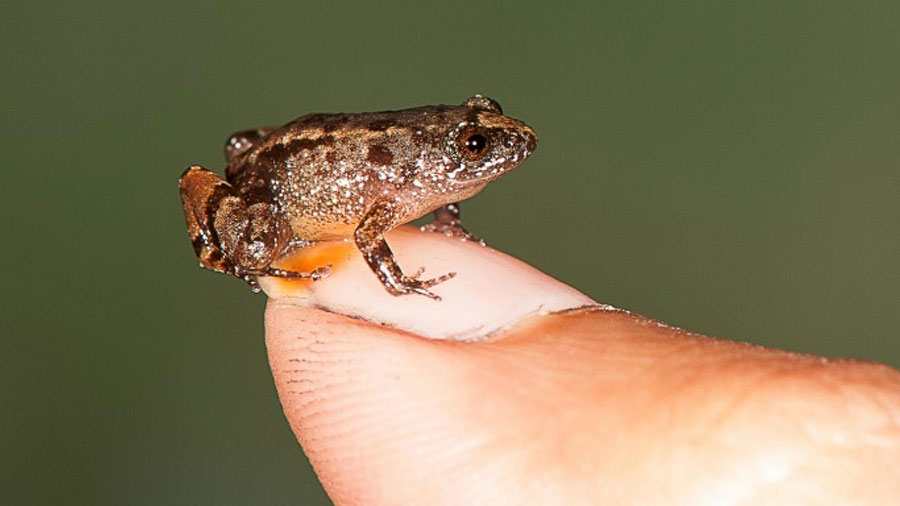Investigators have discovered seven new frog species in Western India, and four of the newly discovered species are among the world’s smallest, as they are as big as an M&M.
This kind of frogs is commonly known as night frogs, as these animals can only be found in the Western Ghats, which is a biologically rich mountain formation located in Western India.

Over the past five years, there have been 14 discoveries of small night frogs, as other 14 more have been discovered in the last century. Sonali Garg, a Ph.D. student at the University of Delhi, explained how the discovery of these new small frogs was very “tricky.”
Among many other features, these frogs are tiny, as they measure about 12 millimeters long. The smallest frog known is about 7.7 millimeters, and it is a species called Paedophryne amauens of Papua New Guinea.
Added to that particular fact, these frogs do not have the same lifestyle of other similar types. These specimens live in marshes or forests as other similar frogs prefer streams as their habitats.
“It was extremely difficult to locate the calling individuals because they were always hiding under thick ground vegetation and leaf litter,” says Garg, co-author of a new study published February 21 in the journal.“If we went too close, they would stop calling, making it even more difficult.”
The research team was able to conduct exhaustive analysis to DNA gathered from the specimens discovered, as well as they defined their physical characteristics and calls.
Immediate protection is needed for these new species
Sathyabhama Das Biju, an amphibian expert at the University of Delhi and a study co-author, warns about how these recently discovered species need immediate protection.
“Though the miniature frogs were relatively common and abundant at their respective survey sites, we found that in most cases their habitats were highly disturbed by human activities,” Biju says by email.
According to Biju, there is a proliferation of large plantations and human settlements in areas near to the habitats of these night frogs located in India’s Western Ghats. He explained how small changes in the areas they live could affect their life expectancy greatly.
Neil Cox, manager of the International Union for the Conservation of Nature’s Biodiversity Assessment Unit has said that climate change is the principal responsible for the danger in which these species are immersed. He explained that warm temperatures are causing populations of frogs to move up to higher locations. Scientists are not exactly sure about the consequences of this migration.
The authors stated how almost 35 percent of the known amphibian species are under threat of extinction, as this was one of the reasons that accelerated this study for them to found them before they were gone. Over the last decade, there have been more discoveries of amphibians than in many other years.
Between 2001 and 2015, over 1,500 new species have been discovered and about 150 of them were found in the Western Ghats. The researchers explained the importance of this fact arguing that knowing more about these animals can help them think about better ways to protect them.
Source: National Geographic
